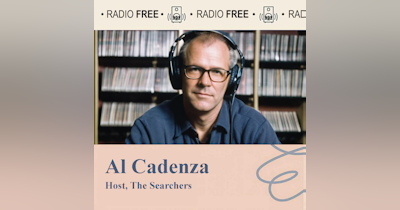When considering the most current discoveries in astronomy one may not think about Hip-Hop. However, over the course of its first fifty years, Hip-Hop artists have rhymed about the movements of the sun, moon, and stars in multitudinous songs and freestyles. Out of that group, Rakim Allah is the greatest rapper to rhyme about such subjects.
While Hip-Hop has a plethora of artists drawing attention to the streets and other earthy realms of fateful existence, Rakim stands alone for his constant attention to the higher realms. For instance, briefly analyzing his song “The Mystery, (Who is God?)” which appeared on his 1997 album, The 18th Letter, we can learn much about current astronomical and cosmological discoveries. Rakim conforms to the 5 Percenter belief system, an organization that laid a fundamental template for Hip-Hop as a whole. One of the more interesting influences of the 5 Percenters has been the emphasis on speaking in mathematical and astronomical terms. To become a 5 Percenter, one must learn the lessons by heart as well as learn the Supreme Mathematics, a numerological system that corresponds numbers with concepts like knowledge, wisdom, understanding, culture, power, equality, God and the like. Members are encouraged to speak out loud to those around them, about topics in mathematics, cosmology, astronomy, and science and how they relate to their doctrine. Such dialogues have influenced Hip-Hop and is most evinced in the lyrics of Rakim.
There is something illuminating about a rapper as skilled as Rakim breaking down mathematical word problems in his lyrics that makes him the G.O.A.T. If you listen and study his rhyme patterns you can hear the intricate organization of his flow which reveal a mathematically balanced expression of syllable distribution. He demonstrates the same poetic skillset on “The Mystery (Who is God?)” when he rhymes about the birth of the universe:
“In eternal darkness in the midst of the darkest night/ Proteins and minerals exist within specks of light/ Solids, liquids, and gases of light within Infinite lengths and widths and depths and heights/ No beginning or ending, the seven dimensions/ Enough space for more than a million words and inventions/ To travel through time within enough room to be the womb/ Of the most high’s great mind which he will soon make shine/ With intelligent elements in sight that he will gather/ In the realms of relativity, electricity struck matter/ Energies explode he below to keep releasin Atoms by the millions, til the numbers increasin/ Til it was burnin he kept returnin itself to the source/ The hotter his thoughts it gave the center more force.”
Such lyrics make it instantly clear why Rakim has been referred to as the “God MC.” Rakim’s explanation of cosmological creation and the of the universe gets me thinking about recent theories of galactic formation. One theory, the Monolithic Collapse model, proposed that disc galaxies like our own were formed from a humongous collapse of a giant gas cloud. So, our solar system, and our earth, was then formed from this collapse of gas roughly 4.5 billion years ago. This was the prevailing model in astronomy since it was constructed in 1962. However, over the last few years, another model of galactic formation has gained popularity amongst scientists. One specific theory, the hierarchal clustering model, proposes that instead of large gas clouds collapsing into matter, galaxies like ours were formed when gas clouds joined into small clouds, which resulted in clumps of matter merging with other small chunks endlessly to form galaxies.
This is all very interesting when thinking about human lifespan. As stated, the earth and solar system is roughly 4.5 Billion years old. At this stage in evolution, a homo sapien whose lived 90 years has lived a long life. However, contrasting the age of the earth to that of a 90-year-old human one losses comprehension for how small a span of time a human life is compared to the earth. Yet, collectively we’ve worked together as one human race to find these things out and to hopefully learn how to live even longer lives. Such discoveries have occurred because homo sapiens figured out how to communicate through the written word, birthing human civilization about 5,000 years ago. This sounds amazing to us, but in cosmological terms 5,000 years of human civilization is smaller than .0001% of the time the earth has been around. Homo Sapiens have only been here for between 200,000 and 45,000 years. So, Homo Sapiens have been roaming the earth for .001% of the time of earth has been alive. A human lifespan compared to the earth’s is like a speck of dust on a grain of sand in a fleeting dream. Humility is endless when contemplating such numbers and scale. We are such a new species that is constantly evolving. So new that at one point, not too long ago, we thought we were the center of the whole universe. Every day is truly a mystery when viewing things from such a large-scale perspective.
Like I said, human beings are such a young species that its worth thinking about how young we really are. For one, our brains are older than us. Meaning that the brain in the homo sapien cranium is the same brain that was in other earlier hominids from whom we evolved. Of course, it’s not the same exact brain, for it’s the specific development of the neo-cortex that makes the homo sapien brain different than the brain of earlier hominids. Perhaps also found within the neo-cortex is the human ego, which thinks that humans are the center of all existence and top of the food chain.
Giordano Bruno was burned at the stake in 1600 for suggesting what scientists are claiming today, that there may be infinite universes. Humans went 1600 years believing that the earth was the center of the universe, that the sun revolved around the earth, instead of the other way around, and that there was only one universe. (The word itself means “one verse”) Then came Copernicus and Galileo and they flipped the geocentric script into a heliocentric model of orbiting planets around the sun. For disrupting such illusions and speaking truth Galileo was imprisoned and forbidden to conduct his science by the Catholic Church. Over three hundred some odd years later humanity adjusted to that Heliocentric theory of the galaxy but then something else happened. Before 1917, scientists only speculated that exoplanets existed, but they could never prove it. For nearly 80 years, this speculation remained just that, but in 1992 the existence of an exoplanet was finally confirmed. Fast forward thirty-years later, in 2024, over 1,500 exoplanets have now been discovered! Scientists have recently gone so far as to speculate that our galaxy may contain at least 10 billion earth like planets. This does not even account for exoplanets in other galaxies. To take things one step further, scientists currently believe that there are at least 2 trillion galaxies within our universe. So just in the course of your lifetime more discoveries have been made about “the heavens” than in any other period throughout homo sapien history. Somehow listening to Rakim’s song one suspects that the God MC knew all this already.
Rakim reminds listeners how much fun it is to contemplate the truly big picture. The most current view of the Big Bang theory, which said the universe emerged from a giant explosion 13.8 billion years ago, suggests an infinite amount of universes. According to the multiverse hypothesis, our universe is just one of many that emerged from a sea of other universes like bubbles from the ocean. The Multiverse hypothesis suggests that there are an insane amount of universes existing simultaneously. The current number of universes scientists believe there are in existence is 10^10^10^7. Stating those number in Supreme Math, we get “Knowledge-Cipher, Knowledge-Cipher, Knowledge-Cipher, God”, which to me means that if one remains absolutely dedicated to attaining knowledge, wisdom, and understanding on the nature of the existence over and over, one may finally meet “God.” What if, as Baruch Spinoza, the Dutch Jewish philosopher, was correct when he stated that Nature “is” God? As Rakim rhymes, the universe gave birth to us and we learn to realize the universe. What if the whole unfolding of existence is “God” realizing itself? As Rakim asks, “Who is God?”
###
FAQs About This Article
wherein an AI reads the article and suggests a few questions that remain unanswered...
Q: How did the 5 Percenter belief system influence the development of Hip-Hop, and what other artists within this genre have incorporated mathematical and astronomical themes into their lyrics?
A: The 5 Percenter belief system played a pivotal role in shaping the foundation of Hip-Hop. It provided a fundamental template for the genre by encouraging members to speak about mathematical, cosmological, and astronomical concepts. This influence is evident in the lyrical content of Hip-Hop artists who adhere to the 5 Percenter philosophy. Alongside Rakim, other notable artists who have embraced mathematical and astronomical themes in their lyrics include members of the Wu-Tang Clan, particularly the influential lyricist GZA, and Nas. These artists have contributed to a unique blend of cultural expression within Hip-Hop, infusing the genre with intellectual and scientific dimensions that go beyond traditional themes in music.
Q: In what ways has Rakim's lyrical content, specifically in the song "The Mystery (Who is God?)," contributed to a deeper understanding of current astronomical and cosmological discoveries, and how have scientists and astronomers responded to or engaged with such artistic expressions?
A: Rakim's lyrics delve into the birth of the universe, referencing elements such as proteins, minerals, and the dimensions, providing a poetic yet informative perspective.
While scientists and astronomers may not directly respond to Rakim's artistic expressions, there is a broader cultural impact. Rakim's fusion of Hip-Hop and scientific themes serves as a bridge between art and science, sparking curiosity and interest in cosmic topics among a diverse audience. This indirect engagement has the potential to inspire individuals to explore scientific concepts on their own, creating a unique intersection between the arts and the sciences within popular culture.
Q: The blog post touches upon the evolution of human understanding of the universe, from geocentric to heliocentric models and the discovery of exoplanets. How has this evolving understanding influenced cultural perspectives, including religious beliefs, and are there instances where scientific advancements, as mentioned in the post, have clashed with societal or religious norms?
A: The evolving understanding of the universe, as discussed in the blog post, has significantly influenced cultural perspectives, particularly in the realms of religion and societal norms. The shift from a geocentric to a heliocentric model challenged prevailing religious beliefs that positioned Earth at the center of the universe. This upheaval sparked tensions between scientific advancements and religious doctrines, as seen in historical conflicts such as Galileo's confrontation with the Catholic Church.
Similarly, the discovery of exoplanets and the vastness of the universe have raised questions about humanity's place in the cosmos. Scientific advancements suggesting the potential for extraterrestrial life or multiple universes have sometimes clashed with religious narratives that place Earth and humanity at the center of divine creation.
Throughout history, these clashes have prompted societal debates, challenging established norms and provoking reflections on the intersection of science, faith, and cultural beliefs. The ongoing dialogue between scientific discovery and cultural perspectives continues to shape our understanding of the universe and influence how societies reconcile traditional worldviews with emerging scientific insights.






